Mesopotamia and Egypto
Mesopotamia
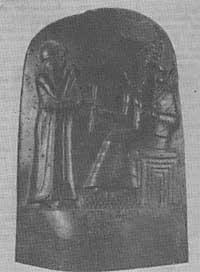
From the point of view of science, in particular of another practical aspect, the most solid foundation of its creation lies in the coordination and normalization of knowledge of technique and common sense. The first step of this was toward C. In approximately 2500 years it was donated by the Babylonian authorities by installing police units of length, capacity and weight.
Mathematical and engineering knowledge seem to have gone through Sumeria's non-seed, this a. C. It was present a thousand years before the year 2500. Multiplication tables, squares and cubes have been found on the tablets of Babylon. They had a system of twelve that facilitated fractional calculations, but with a decimal system of ten fingers; the sixties had a special meaning because it was the union of the two systems cited.
The use of these two numbering systems was the basis of weights and measures. Much of our algebra and arithmetic has emerged from the above-mentioned tables, the importance of the position of figures in the writing we use today by the hand of the Arabs who centuries later would reach us.
The principles of geometry also seem to be a consequence of daily necessity, found in surveying by numbers and fine formulas.
Plot planning was a more complex urban planning. The scale plans and the architectural rule for his acts already appear in the state of the Lagash War, that is, in the state of C. 2250 years approximately. In the beginning the urban houses were cane huts or wooden villages. However, due to the disaster of the fire caused by the congestion of houses in the cities, these good combustion materials were replaced by wrecks.
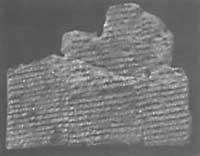
The next step was more important: the invention of the dry clay piece of regular clay, ie brick. The accumulation of these pieces, if their ice is not straight and their angles the same, is difficult. Therefore, these concepts arose at that time. Both surveying and construction generated visual concepts of surface and volume. The last two observations allowed to appreciate the geometry from the lengths of the sides.
However, these real concepts were mixed with magical concepts and passed from Babilo nieta to Mendebaldea. Therefore, the belief that over the centuries some numbers were related to the gods and that geometric diagrams existed to predict the future.
The systematic measurement of time began in ancient times in Babylon. As agriculture progresses, the delimitation of seasons is more important. Wheat and barley, apparently, were born in the Euphrates vegas, or it is known that they were formerly cultivated for food: they are cited in buzkin tablets and appear ploughed in Babylonian paintings. Its growth depends on the time of year, it creates the need for a calendar.
This can explain why the first steps of astronomy took place in the valleys of Euphrates and Nile. Man immediately discovered a unit of time offered by Nature: the day. When he needed a greater unity than this, he took the month; each month began with the arrival of the new moon. Subsequently, we tried to locate the number of months corresponding to each station. All in Babylon, a. It happened in 4000 and later in China.
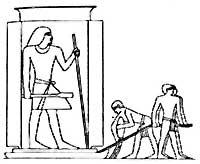
A. C. By the year 2000, approximately, the Babylonians, divided into twelve months, knew a year of 360 days. From time to time and to make the necessary adjustment one more month was introduced. During the hours of the day, the hour in minutes, the minute was divided into seconds and the solar sphere was also invented, which was only a vertical reed on the ground and represented the filtering of the hours.
Experts in the imaginary movement of the Sun and the planets between fixed stars known to the Sun, the Moon and others, created a new seven-day unit, the week, adapting the names of the five planets. According to the months, throughout the space, the path of the Sun was divided into twelve parts, corresponding to each of them a mythical and a symbol. Thus, some parts of the firmament are Aries, Kantzer, Eskorpiokin, etc. they got up. Then, with the stars in those pieces, they would do the same.
For the Babion the Universe, with the earth in the background, was like a closed box. In the area of tru of Zen the earth rose to form the snow zones and in them was the origin of the Euphrates. Around the Earth he was going to dedicate himself to a sohorna of water and, finally, to sustaining the mountains of heaven. However, it seems that some Mesopotamian astronomers discovered that the Earth was round.
First concrete data of astronomical observations we know. They are made in 2000 and correspond to the birth and entry of the planet Artizar. From time immemorial, the Mesopotamian priests observed night grazing from the sky of Mesopotamia and put the data obtained in clay tablets.
Cracks became aware of the regularity of astronomical phenomena, and a. C. VI. According to a 20th century document, the relative positions and eclipses of the Sun and Moon became able to calculate previously. The creation of scientific astronomy can only be considered. With its three schools of Uruke, Sippar and Babiolian, the honor of this creation corresponds to Mesopotamia.
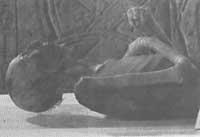
Based on this real basis, the Babylonians built an astrological board that, in their view, was the perverse goal of science. Probably, it was a series of chiripas that served as a starting point and from which came the idea that human life was fixed and directed by the stars. Through these observations the Babylonian astronomers gained great influence on men.
In the library of each temple were written astrological and astronomical literature. One of these libraries had clay bacon, a. C. VII. In the eighteenth century it had a very large lodging and it seems that it had data of more than 3000 years.
Astrology Summit a. C. It was for about 540 years, that is, after the broths took over the country. Two centuries later it passed to Greece and from here everyone was known. However, at this time and in their own country of origin steps were being taken towards rational astronomy.
Magic, apparently, was at first sympathetic, that is, it imitated the phenomena that men wanted to achieve to dominate Nature. So, for example, when the frogs crocan, if they saw that it rained, he wants to do the same and with the frogs begins to make the cro. From here rites of mystery arose. Later, in another later age, when thinking about them, he imagined that the forces of Nature were a kind of living beings. Then, the magical rites of immemorial origin became ceremonies, forming gods.
It seems that before the time of the documents we have, this kind of magic was used in Mesopotamien. Although some gods, such as Oannes, who was the source of all wisdom, were considered in favor of man, the Mesopotamian magic gave rise to the fact that most of the gods were enemies of man, perhaps because of the insecurity existing in that territory. The idea that the destiny of man was written in the stars arises in the antiquity of Mesopotamien.
Egypto
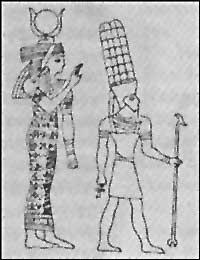
Egyptian gods and goddesses. Iris. Sister and wife of Osiris child protector. Amon. Although they greeted him with different names and attributes, only one was this greater god.
This therefore led to the idea of unintentional chance. Egypto in history emerged at the beginning of the third millennium. We hardly know anything about what happened before this time. However, the findings of some necropolis of Egypto (Badari, Hierakonpolis, Nagada) and Deltren del Sur (Heliopolis, Meadi) have allowed us to know the life of a few centuries before the historical epoch.
Egypto was divided into two kingdoms. The king of the South, the roast Scorpio, wanted the union of the two parts but did not succeed. Its origin, Narmen, (now known as Menes), was: He got the southern and northern parts in his hands. This king was the first king of the first dynasty.
The first and second dynasty formed the time of Thinita. (=3000=2700). Being the seat of the king in the city called This, this dynasty was called.
The Lacanian Empire (III. and IV. dynasties). This empire for five centuries ( a. C. It was extended by =2700 - =2200). At this time a surprising civilization arose: Pyramids of Gaqara and Giza, impressive poetic and religious works, etc. Cheops, Chefren and Mizerino Pharaohs, among others, belong to this time.
In the next two centuries, Egypton won internal struggles, invasions, and a break in unity. However, at the beginning of the second millennium, under the direction of powerful pharaohs ( Amenemhat or XII. dynasty, C.A. 2000 - 1785, like Sesostria, again achieved the prosperity lost by Egypto. At the end of this period, at the time known as the Central Empire, internments arose again and the North was invaded. In this invasion the Asian Hyksos entered.

A King Savior. dynasty ( a.C. 1580 - 1314). The Pharaohs were the best known of this dynasty, being Amenofis and Thoutmosis. This dynasty with the following two, XIX. and XX (B.C.) 1314 - 1085) forms the New Empire. In these last dynasties the Seti I and Ramsert were the Farayones the best known. After these dynasties (1085 - 333 BC) the Empire descends and plunges into a steady decline to become the current Egypto.
Although the Egypto civilization reached a relatively high level since ancient times, the greatest advances in practical actions were in the 18th century. during the dynasty (BC) 1400). But they didn't get into their heads the idea that man, by himself, got knowledge step by step. According to them, to devise for themselves language, writing or calculation, for example, was a dream. That is, the participation of the gods was essential.
The Egyptar, back from the Babylonians, claimed to have received from the gods the creation of all knowledge. Among the gods (mostly friends of the Egypton men) stands out the so-called Thot. This was monarch and legendary among the gods; this moon god measured time, counted days and recorded years. He is also the king of the word, the chief librarian and inventor of writing. In addition, it established a service of homeless monitors in the temples, which were to collect and transmit the astronomical phenomena of each century.
In the field of arithmetic the level of the Egyptians was, approximately, similar to the Babylonian. They had a decimal numbering system and numbers up to ten were represented with scraped stroke lines, while those in ten were explained face down with a U.
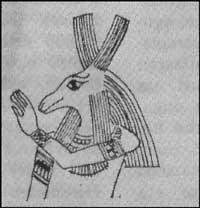
Due to the floods of the years of the Nile River, the marks and limits of the land were eliminated, which caused the drift for the development of agrotourism. However, his inventor was Thot, a god friend. It seems that for a long time the agrarians recorded the data after measuring the land with rope.
However, the oldest notes on arithmetic and geometry are those of C. The priest Ahmôse spans from 1800 to 1600. dynasty ( B.C. In the year =2000 he made a copy of an older papyrus. It indicates ordinary arithmetic operations and fractional numbers, multiplying by sum. Measurement standards are also provided.
Astronomy is almost as old as in Babylon, Egypton, but it did not reach the level. The importance the Babylonians attributed to astrology is due to their influence on astronomy.
They identified the constellations with their mythological gods and painted them on the roof of their tomb and on the covers of the sarcophagi. They admitted that the beginning of the year coincided with the flooding of the Nile from time immemorial, but when they made a more precise calendar they took the day on which this day is formed with the star Sun Stokis (Sirius). BC. By 2700 Egypto priests had a solar calendar. The 360 days of the year, with a week of ten days, were classified in 36 weeks.
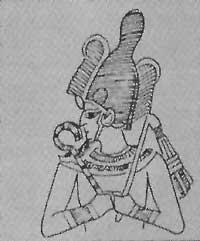
The idea of the Egypti about the universe is basically similar to that of the Babylonians: in his opinion the Universe was a perfectly angular box, whose most important aspects were oriented in the North-South direction. The bottom was a little concave and in its center was Egypto. The sky was a flat roof of four columns or mountains, from which the sheets hung with something similar to a cable. Around the edge of the box was a large river in which a boat with the Sun was boiled. Nile was only the estuary of this river.
Although astronomy Egyptians were behind the Babylonians, medicine was reversed. Some of the papyri found and deciphered are authentic medical treatises. The best from the papyrus Ebrs (a.C.) =1600 years) and come from what was discovered by Edurin Smith (2000 BC). The name of the first doctor known is the one who comes in peace Imhotep, something that today we do not know if it was real or mythical. However, he was then divided and regarded as the god of medicine.
In Mesopotamia there was no rational medicine school: the origin of all evils or diseases were evil powers, so the only way to cure was magic. Egypti also used destinies, but their medicine was much more rational and achieved the highest level. The exhumation of the corpses required a knowledge of the anatomy, but it seems that only the upper organs were described and their ideas about their function were very wrong. However, the quirurigi began and a. C. In some sizes of 2500 years you can see the succession of some cuts of the operating rooms.
Doctors studied in priestly schools and knew specialties such as bone or eye. To cure the diseases of the mind, destinies were used: their causes were maleficent, so culture and magic were needed. The use of drugs and essences was high and some of their cures spread throughout the world that was known. This medicine passed from Egypto, perhaps by the way of Crete, to Greece, from here to Alexandria and then to Europe.
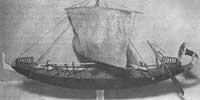
The images of the graves indicate that they were interested in different types of people. Thus, the Egyptians in red, the Semitenses in yellow, the Lybians in black and white, that is, each painted its color. Is it the first step in anthropology?
From the HAMMURABI CODEIf someone forcibly enters a house, death is worth it and his body is buried in the place of rape. When a house burns, the thief is thrown into the fire if it is stolen by one of those who come to go out. If a house raised by a builder falls by a slight action and kills the owner of the house upon falling, it will be put to death. If the owner's son dies, he must also be condemned to collect that of the builder. In case of death of the owner's slave, the construction company must compensate its client with a slave. |
Buletina
Bidali zure helbide elektronikoa eta jaso asteroko buletina zure sarrera-ontzian











